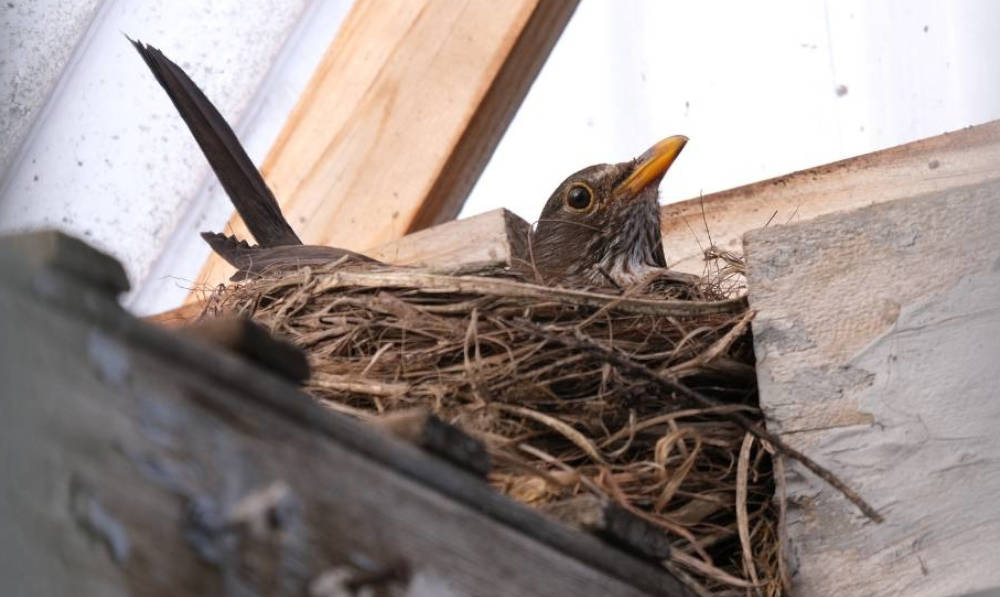KEY TAKEAWAYS:
Visual and Auditory Deterrents: Reflective objects, decoy predators, and ultrasonic devices can effectively deter birds without causing harm by leveraging their visual and auditory sensitivities.
Physical Barriers: Using bird netting, spikes, and sloping surfaces provides humane physical barriers that prevent birds from accessing certain areas.
Habitat Modification: Removing food sources and making landscaping adjustments, such as using bird-resistant plants, can make areas less attractive to birds.
Safe Relocation: Professional wildlife control services can safely and humanely relocate birds and nests from inconvenient or dangerous locations.
Coexistence: Humane bird deterrence methods help protect property and crops while ensuring the safety and well-being of birds, promoting a peaceful coexistence with nature.
Birds, with their vibrant plumage and melodious songs, are a delightful part of nature.
However, they can also become unwelcome visitors when they invade gardens, homes, or commercial spaces.
Traditional methods to deter birds often involve harsh measures that can harm them, but there are numerous humane and effective strategies that can keep birds at bay without causing them harm.
1. Visual Deterrents
Birds rely heavily on their vision, making visual deterrents an effective and humane method to keep them away from certain areas.
Reflective Objects
Hanging reflective objects like old CDs, aluminum foil strips, or specially designed reflective bird deterrent tape can confuse and deter birds. The reflections created by these objects are disorienting and can prevent birds from landing nearby.
Decoy Predators
Using decoy predators such as plastic owls or hawks can scare birds away. These decoys need to be moved periodically to maintain their effectiveness, as birds are smart enough to recognize stationary threats as non-genuine over time.
Wind-Activated Devices
Devices such as pinwheels or wind chimes not only add a decorative touch to your garden but also serve as a deterrent to birds. The movement and noise created by these devices can be unsettling for birds, encouraging them to avoid the area.
2. Auditory Deterrents
Birds are sensitive to sound, and certain auditory deterrents can be used to keep them away without causing harm.
Ultrasonic Devices
Ultrasonic bird deterrent devices emit high-frequency sounds that are unpleasant to birds but inaudible to humans. These devices can cover large areas and are effective in deterring various bird species.
Distress Calls
Playing recordings of bird distress calls or predator sounds can discourage birds from settling in an area. These sounds signal danger to birds, prompting them to flee. However, like visual deterrents, these recordings should be used intermittently to prevent birds from becoming accustomed to them.
3. Physical Barriers
Physical barriers are a straightforward and humane way to prevent birds from accessing certain areas.
Bird Netting
Bird netting is highly effective for protecting gardens from birds, fruit trees, and buildings. The netting provides a physical barrier that birds cannot penetrate, thus protecting the area without causing harm to the birds.
Spikes and Slopes
Bird spikes, typically made of plastic or metal, can be installed on ledges, window sills, and other flat surfaces where birds might perch. These spikes are not harmful but make the surface uncomfortable for birds to land on. Similarly, sloping surfaces can be created to make it difficult for birds to find stable footing.
4. Habitat Modification
Altering the environment to make it less attractive to birds is another humane strategy.
Remove Food Sources
Birds are often drawn to areas where food is readily available. Ensuring that trash is securely covered, cleaning up food spills, and avoiding bird feeders if you do not want birds in your area can significantly reduce the attraction.
Landscaping Adjustments
Modifying your landscaping can also help. For example, using bird-resistant plants and avoiding water features that attract birds can make your property less appealing to them. Dense shrubbery and thorny plants can discourage birds from nesting.
5. Safe Relocation
In some cases, particularly when dealing with nesting birds, it might be necessary to relocate them.
Professional Help
If a bird has nested in an inconvenient or dangerous location, it’s best to contact a professional wildlife control service.
These experts can safely and humanely relocate the birds and their nests to a more suitable location.

